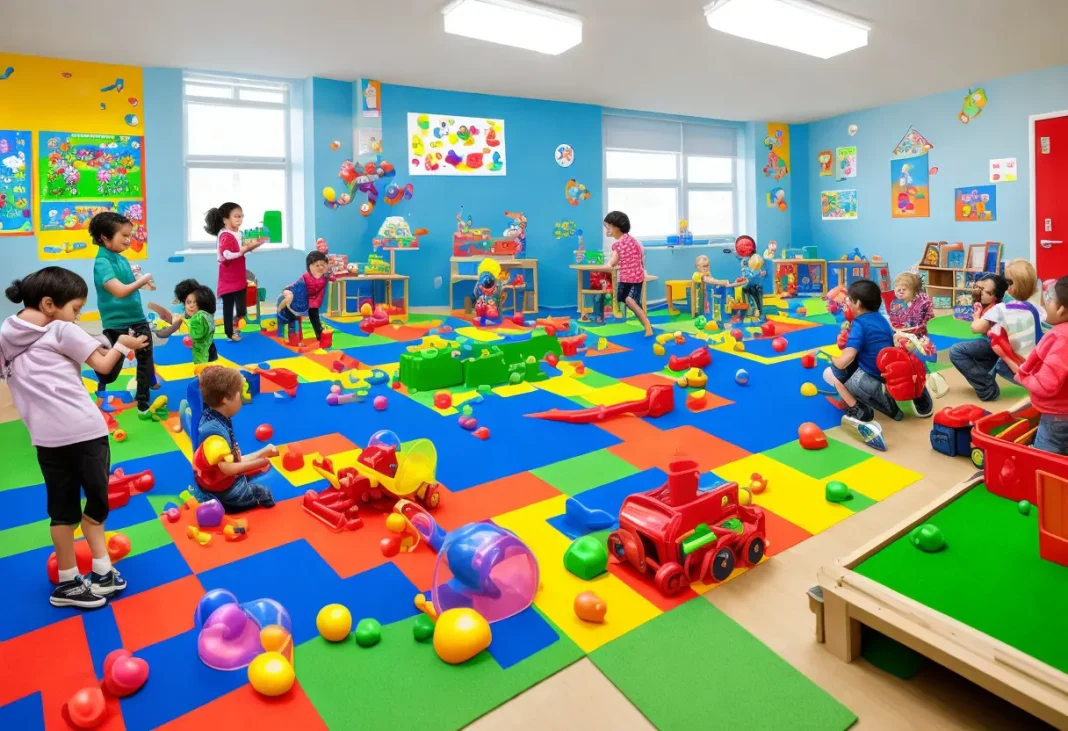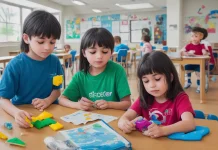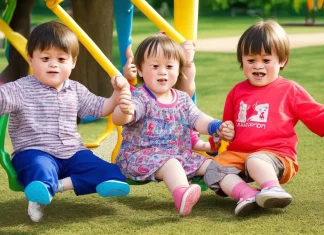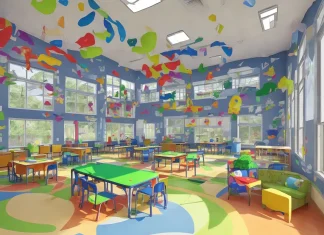Autism is a complex neurodevelopmental disorder that affects millions of children worldwide. It is characterized by difficulties in social interaction, communication challenges, and restricted, repetitive patterns of behavior. For parents and caregivers of kids with autism, finding appropriate resources and support is crucial for their child’s well-being and development. In this article, we will explore a wide range of resources available to help kids with autism thrive and reach their full potential. From early intervention programs to assistive technology and inclusive recreational activities, we will delve into the diverse avenues that can provide support, guidance, and empowerment for children on the autism spectrum.
Understanding Autism in Kids
Before delving into the available resources, it is essential to have a clear understanding of autism and its impact on children. Autism, or autism spectrum disorder (ASD), is a neurological condition that typically appears in early childhood. It affects a child’s ability to communicate, form relationships, and engage in social interactions. Children with autism often exhibit repetitive behaviors, intense interests, and sensory sensitivities.
Definition and characteristics of autism: Autism is characterized by persistent impairments in social communication and interaction. Children with autism may have difficulties in understanding and using nonverbal cues, such as gestures and facial expressions. They may struggle with maintaining eye contact and may have a limited range of interests or engage in repetitive activities.
Prevalence and diagnosis: According to the Centers for Disease Control and Prevention (CDC), approximately 1 in 54 children in the United States is diagnosed with autism. Early diagnosis is crucial for accessing appropriate interventions and support services. Diagnosis is typically made through a comprehensive evaluation that assesses a child’s social, communication, and behavioral development.
Challenges Faced by Kids with Autism

Kids with autism encounter unique challenges that require specialized support and understanding. By recognizing and addressing these challenges, parents and caregivers can provide a nurturing environment that promotes their child’s growth and well-being.
Social and communication difficulties: Children with autism often face difficulties in understanding social cues and developing meaningful relationships. They may struggle with initiating and maintaining conversations, interpreting others’ emotions, and participating in group activities.
Sensory sensitivities: Many children with autism experience sensory sensitivities, which can affect their ability to tolerate certain sounds, textures, tastes, or smells. Sensory overload or discomfort may lead to meltdowns or behavioral issues.
Behavioral issues: Challenging behaviors, such as tantrums, self-stimulatory behaviors (commonly known as “stimming”), or repetitive routines, are common among children with autism. These behaviors often serve as a way to cope with sensory overload or difficulties in communication and understanding.
Resources for Kids with Autism
The journey of supporting a child with autism starts with accessing the right resources and interventions. Here are some key resources that can make a significant difference in the lives of kids with autism.
Early intervention programs: Early intervention is critical for children with autism. Programs such as Early Start Denver Model (ESDM), Applied Behavior Analysis (ABA), and Speech Therapy can help enhance communication skills, social interactions, and adaptive behaviors from an early age.
Specialized schools and educational resources: Special education programs and schools that focus on the needs of children with autism provide tailored curricula, individualized support, and strategies to enhance learning and development. These environments foster inclusivity and help children with autism thrive academically and socially.
Therapy and counseling services: Speech therapy, occupational therapy, and behavior therapy are essential resources for children with autism. These therapies address communication challenges, sensory integration difficulties, and behavioral issues, helping children build essential life skills.
Assistive Technology for Kids with Autism

Assistive technology can play a vital role in supporting communication, independence, and learning for children with autism. Various devices, applications, and tools have been developed to aid their unique needs.
Communication devices and apps: Augmentative and alternative communication (AAC) devices, such as tablets with specialized software, can help nonverbal or minimally verbal children with autism express themselves and interact with others effectively.
Visual aids and schedules: Visual supports, including visual schedules, social stories, and picture cards, assist children with autism in understanding and following routines, managing transitions, and comprehending abstract concepts.
Sensory integration tools: Sensory integration tools, such as weighted blankets, fidget toys, and sensory rooms, provide sensory input regulation for children with autism. These tools can help them self-regulate and reduce anxiety or sensory overload.
Supportive Organizations and Communities
Parents and caregivers can benefit from connecting with supportive organizations and communities that provide guidance, advocacy, and a sense of belonging. These resources offer valuable information, workshops, and support networks.
Autism advocacy groups: Autism Speaks, Autism Society, and other advocacy organizations raise awareness, fund research, and provide resources for families affected by autism. They offer support helplines, community events, and online forums where parents can connect and share experiences.
Support networks for parents and caregivers: Online support groups, parent training programs, and local support networks provide a valuable platform for parents and caregivers to share experiences, seek advice, and find emotional support. These networks foster a sense of community and empower families with practical strategies.
Inclusive Recreational Activities
Engaging in inclusive recreational activities can enhance the social skills, self-esteem, and overall well-being of children with autism. Here are some examples of activities that provide an inclusive environment for kids on the autism spectrum.
Adaptive sports programs: Adaptive sports programs cater to children with disabilities, including autism. These programs offer modified sports activities that accommodate different abilities, fostering physical fitness, teamwork, and social connections.
Art and music therapies: Art and music therapies provide a creative outlet for children with autism to express themselves and develop their communication and social skills. These therapies can be offered in group settings or individual sessions, tailored to each child’s needs.
Social skills groups: Social skills groups create a structured environment where children with autism can practice and develop their social skills. These groups often incorporate play-based activities, role-playing, and peer interactions to encourage social learning and understanding.
Promoting Learning and Development
To support the learning and development of children with autism, various educational approaches and interventions have been proven effective. Here are some strategies commonly employed in educational settings.
Individualized education plans (IEPs): IEPs are tailored education plans designed to meet the unique needs of children with disabilities, including autism. These plans outline specific goals, accommodations, and support services required to promote academic and social success.
Applied Behavior Analysis (ABA): ABA is a scientific approach to understanding and modifying behavior. It focuses on identifying and reinforcing positive behaviors while reducing challenging behaviors through systematic interventions. ABA can be implemented in school settings or through individual therapy sessions.
Speech and occupational therapy: Speech and occupational therapy are integral components of the support system for children with autism. These therapies target language development, sensory integration, fine motor skills, and daily living skills, helping children overcome challenges and reach their potential.
Creating Autism-Friendly Environments
Creating autism-friendly environments is crucial for promoting comfort, reducing sensory overload, and supporting the overall well-being of children with autism. Here are some strategies to make spaces more inclusive and accommodating.
Sensory-friendly design: Designing spaces with consideration for sensory sensitivities involves reducing noise levels, incorporating soothing lighting, and using calming colors. Creating designated quiet areas or sensory-friendly zones can provide children with autism a safe retreat when they feel overwhelmed.
Visual supports and cues: Visual supports, such as visual schedules, visual cues, and labels, can help children with autism understand expectations, follow routines, and navigate their surroundings. Visual supports enhance communication, promote independence, and reduce anxiety.
Noise reduction strategies: Children with autism often have heightened sensitivity to noise. Implementing noise reduction strategies, such as using sound-absorbing materials, quiet corners, or noise-cancelling headphones, can create a more peaceful environment and support their sensory needs.
Cultivating Social Connections
Developing social connections is essential for children with autism to build friendships, enhance communication skills, and foster a sense of belonging. Here are some strategies to support social growth.
Social skills training: Social skills training programs provide structured guidance and practice opportunities for children with autism to learn and apply social skills. These programs focus on areas such as conversation skills, understanding emotions, and perspective-taking.
Peer support programs: Peer support programs, often facilitated by schools or community organizations, pair children with autism with neurotypical peers. This interaction allows for mutual understanding, empathy, and the opportunity for children with autism to learn from positive role models.
Community events and outings: Participating in community events, outings, or inclusive programs can expose children with autism to a variety of social experiences. It provides opportunities for them to practice social skills, interact with others, and engage in recreational activities alongside their peers.
Empowering Parents and Caregivers
Parents and caregivers play a critical role in the well-being and development of children with autism. Empowering them with knowledge, resources, and support is essential for their child’s progress.
Parent training and education: Parent training programs offer guidance on understanding autism, implementing effective strategies at home, and advocating for their child’s needs. These programs empower parents with knowledge and practical skills to support their child’s development.
Respite care and support services: Caring for a child with autism can be demanding and challenging. Respite care services provide temporary relief to parents and caregivers, allowing them to recharge and take care of their well-being. Support services, such as counseling or support groups, offer emotional support and a platform to share experiences.
Conclusion
Navigating the resources available for kids with autism can open up doors to support, growth, and enhanced quality of life. From early intervention programs to assistive technology, inclusive recreational activities, and supportive communities, there are various avenues to explore. By harnessing these resources and implementing strategies tailored to their child’s needs, parents and caregivers can help children with autism reach their full potential and thrive in a world that embraces their unique abilities.
FAQs (Frequently Asked Questions)
Can autism be cured? While there is no known cure for autism, early intervention and appropriate support can greatly improve a child’s development and quality of life.
Are all children with autism nonverbal? No, not all children with autism are nonverbal. Autism is a spectrum disorder, and communication abilities vary from person to person. Some individuals with autism have no difficulties with verbal communication.
What is the role of sensory integration therapy for children with autism? Sensory integration therapy aims to help children with autism regulate their sensory responses and enhance their ability to process and tolerate sensory information. It can be beneficial in managing sensory sensitivities and promoting self-regulation.
How can I find local support groups for parents of children with autism? Online platforms, autism advocacy organizations, and local community centers often provide information about support groups for parents of children with autism. You can also reach out to healthcare professionals or therapists specialized in autism for recommendations.
What is the best approach for inclusive education for children with autism? Inclusive education promotes the inclusion of children with autism in mainstream educational settings, with appropriate accommodations and support. Collaborating with teachers, implementing individualized education plans, and providing necessary resources and therapies can facilitate an inclusive learning environment.



























